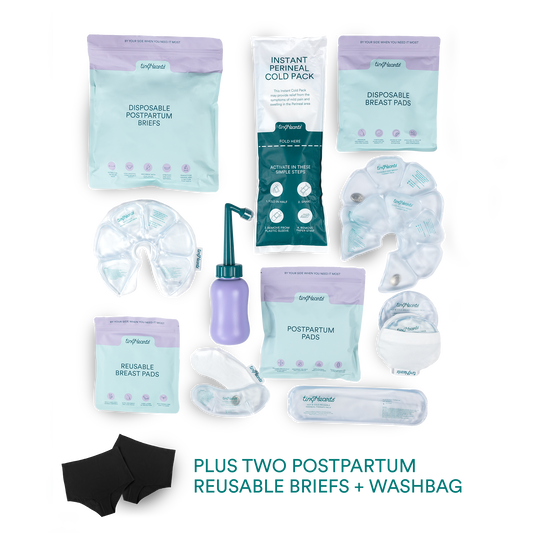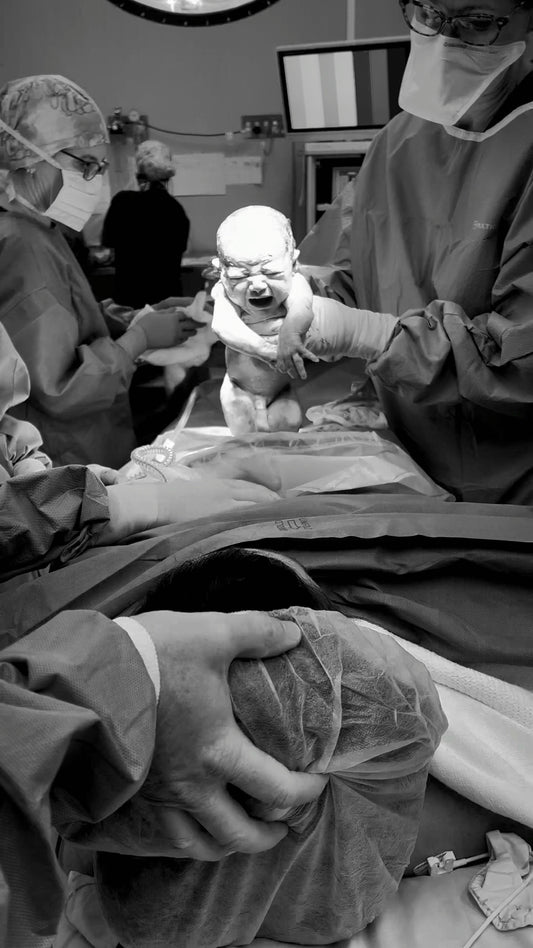Have you ever watched your child shove a whole bunch of food in their mouth, only to spit it out five seconds later? You’re not alone.
Most parents believe this is their child choking and coughing it back up, but most of the time, your child is actually gagging. This reflex action helps to prevent choking!
So, What is Gagging?
The gag reflex is a contraction of the back of the throat triggered by an object touching the roof of the mouth, the back of the tongue or the back of the throat. In babies, this is often triggered by fingers, food, spoons or even toys touching the back of the mouth.
When the reflex is activated, it thrusts objects forward towards the opening of the mouth, expelling any substances that the brain has deemed harmful - cool, huh?
A child’s gag reflex often diminishes at around six months of age, which is generally when most babies are learning to eat solid food. Allowing your child to feed independently and explore their hands and toys with their mouths will also help to dwindle the reflex. Some little ones are a bit more sensitive though and have what is known as a ‘hypersensitive’ gag reflex and as a result, will gag more easily.
Gagging is super common amongst infants - especially when they are making the transition from smooth to lumpy foods, or when learning to chew. Because gagging is a crucial part of oral motor skill development, please don’t overact when your child gags. Positive reinforcement is key so that gagging can become a learnt behaviour. If your child gags, just move the item of food out of the way and cuddle them (no panic party!)
If you haven’t caught on already, gagging is not the same as choking.
Choking is caused by an object that blocks the airway and prevents breathing. When this happens, it’s often silent compared to gagging where children will make retching noises. To learn more about choking click here to download a free PDF fact sheet.
While gagging is part of a bub’s development, choking can be life-threatening, which is why you need to supervise your children at all times - especially during meal and play times. If your child does ever choke, make sure you administer first aid as soon as possible.
Choking First Aid
PARTIAL OBSTRUCTION: If your child has an effective cough, use gravity and lean them forward. Encourage them to keep coughing. If the obstruction cannot be cleared you must call 000. If they lose their forceful cough use the next technique for a complete obstruction.
COMPLETE OBSTRUCTION: If your child does not have an effective cough you should: • DRSABCD • Call 000 • Place your child in a head down position - infant (under 1 year old ) across your lap and child (1 - 8 years old) sitting or standing up • Give up to five back blows using the heel of one hand, in between the shoulder blades. Short and sharp. Check the airway between each back blow to see if the obstruction has cleared.
IF YOUR CHILD IS STILL CHOKING: Give up to five chest thrusts using two fingers (one hand for a child), in the middle of the chest between the nipples. Short and sharp. Check the airway between each chest thrust to see if the obstruction has cleared.
IF YOUR CHILD IS STILL CHOKING: Alternate between five back blows and five chest thrusts until the obstruction is cleared (checking the airway to see if it has cleared in between each back blow or chest thrust), paramedics arrive, or until they render unconscious. If they render unconscious you must start CPR.
Note: The obstruction may clear during CPR compressions. If this occurs roll your child on their side and clear the mouth of the foreign object.
Choking Treatment for Infants
While the above is super helpful and will help in a choking emergency. It is no comparison to learning these skills in real life. The Tiny Hearts First Aid course guides parents through choking first aid and gives you ample time to practise your skills on manikins. To view dates or to book, click here.









